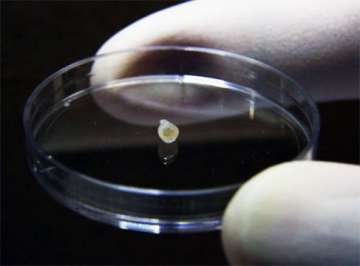In what signals a big leap in the quest for treatment, research and study into the Parkinson’s disease, scientists have now developed “mini-brains” which they claim will also help them find cures and conduct studies into other ageing-related brain diseases as well.
These “mini midbrain” versions are 3D miniature tissues that consist of certain properties of specific parts of the human brain.
In Parkinson's disease, the neuromelanin production reduces, which leads to the degenerative condition of patients causing tremors and impaired motor skills.
The scientists detected the black pigment neuromelanin in an organoid model. The study also revealed functionally active dopaminergic neurons.
Using stem cells, scientists grew pieces of tissue known as brain organoids, measuring about 2 to 3 mm long. These organoids contain the necessary hallmarks of the human midbrain, which are dopaminergic neurons and neuromelanin.
“Considering one of the biggest challenges we face in PD research is the lack of accessibility to the human brains, we have achieved a significant step forward,” said Professor Ng Huck Hui from The Agency for Science, Technology and Research's Genome Institute of Singapore (GIS).
“The midbrain organoids display great potential in replacing animals' brains which are currently used in research; we can now use these midbrains in culture instead to advance our understanding and future studies for the disease, and perhaps even other related diseases,” he added in a statement.
The human midbrain is the information superhighway that controls auditory, eye movements, vision and body movements.
It contains special dopaminergic neurons that produce dopamine -- which carries out significant roles in executive functions, motor control, motivation, reinforcement, and reward.
High levels of dopamine elevate motor activity and impulsive behaviour whereas low levels of dopamine lead to slowed reactions and disorders like PD which is characterised by stiffness and difficulties in initiating movements.
“It is remarkable that our midbrain organoids mimic human midbrain development. The cells divide, cluster together in layers, and become electrically and chemically active in three-dimensional environment like our brain,” noted Assistant Professor Shawn Je from Duke-NUS Medical School's Neuroscience & Behavioural Disorders Programme.
“Now we can really test how these mini brains react to existing or newly developed drugs before treating patients, which will be a game changer for drug development,” he pointed out.
(With agency inputs)
Latest World News
